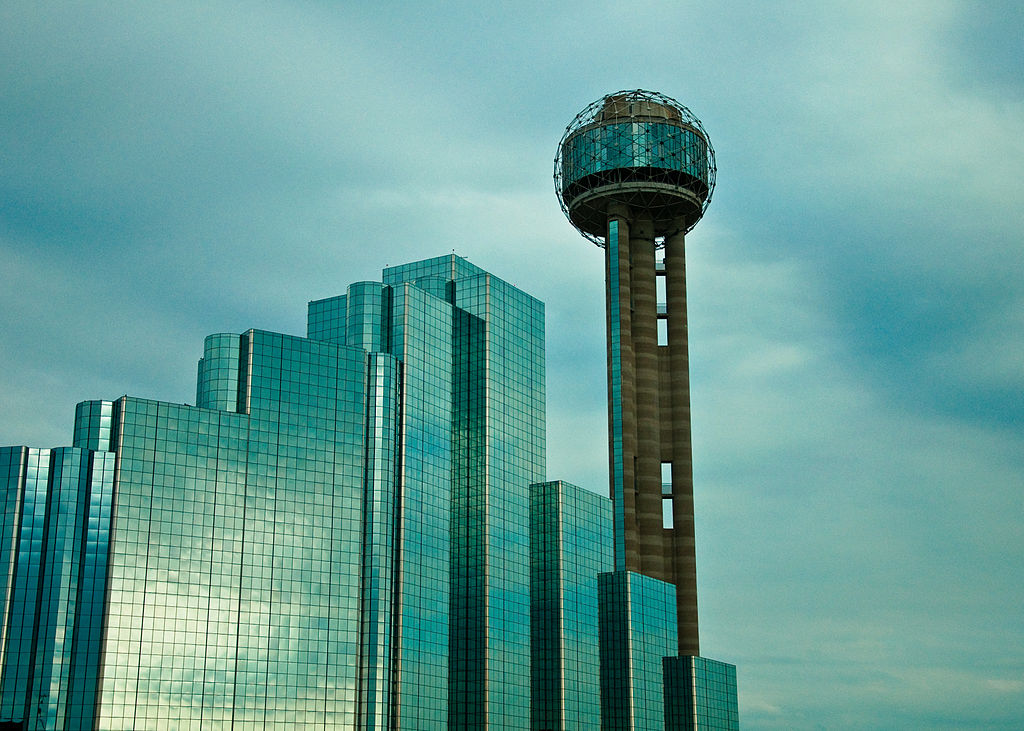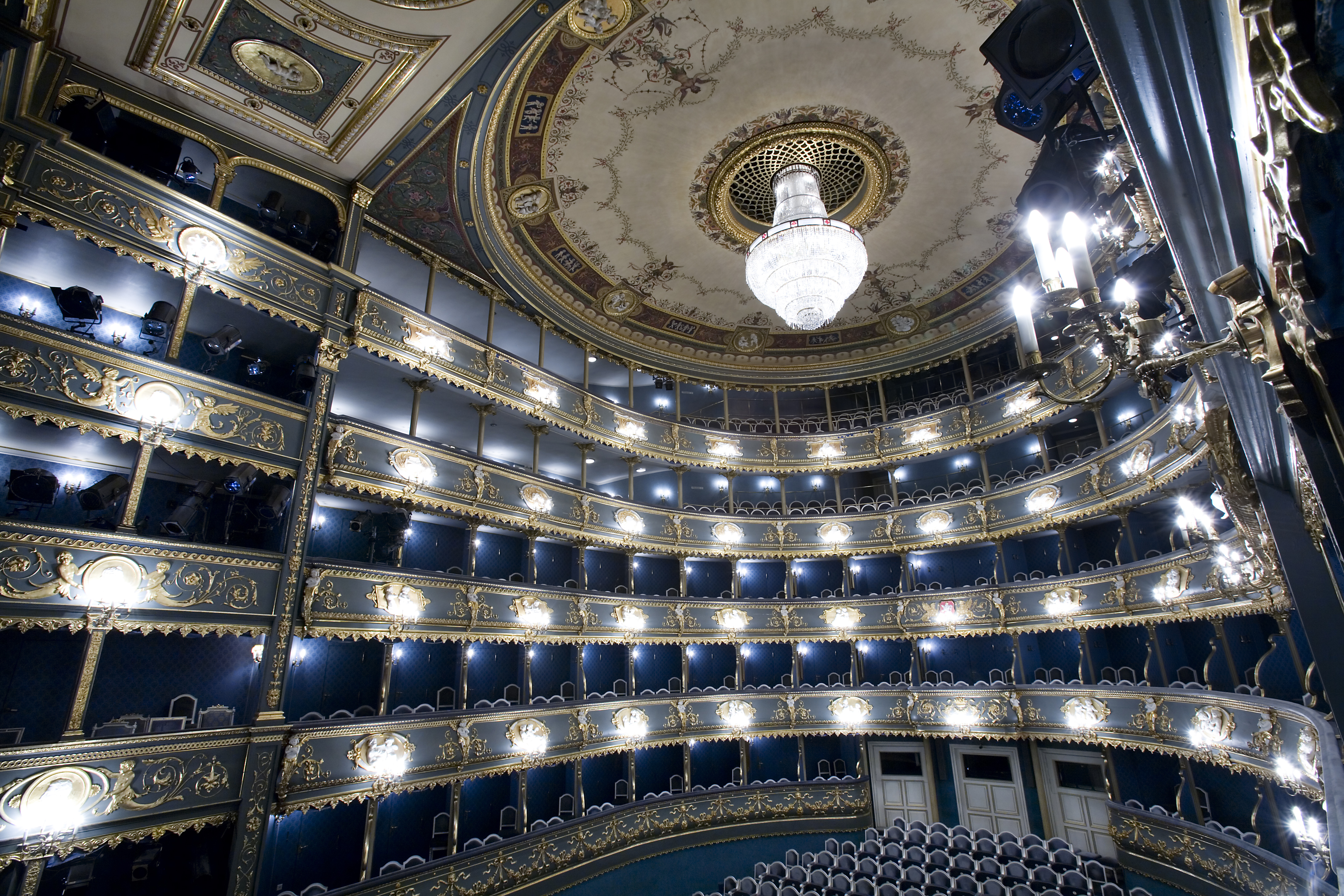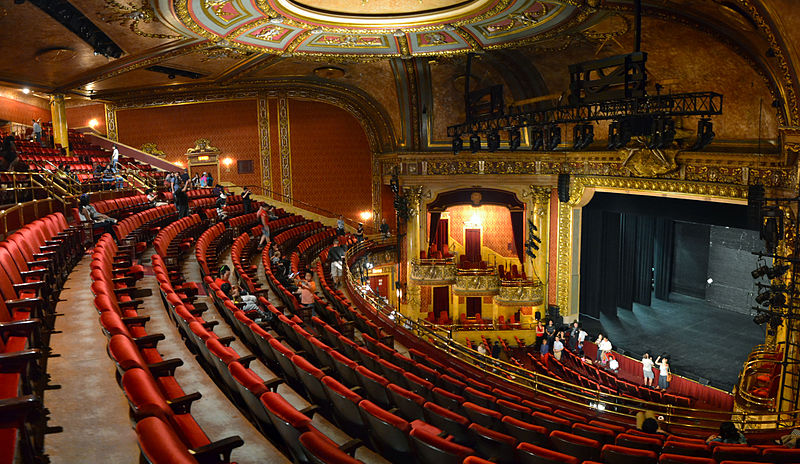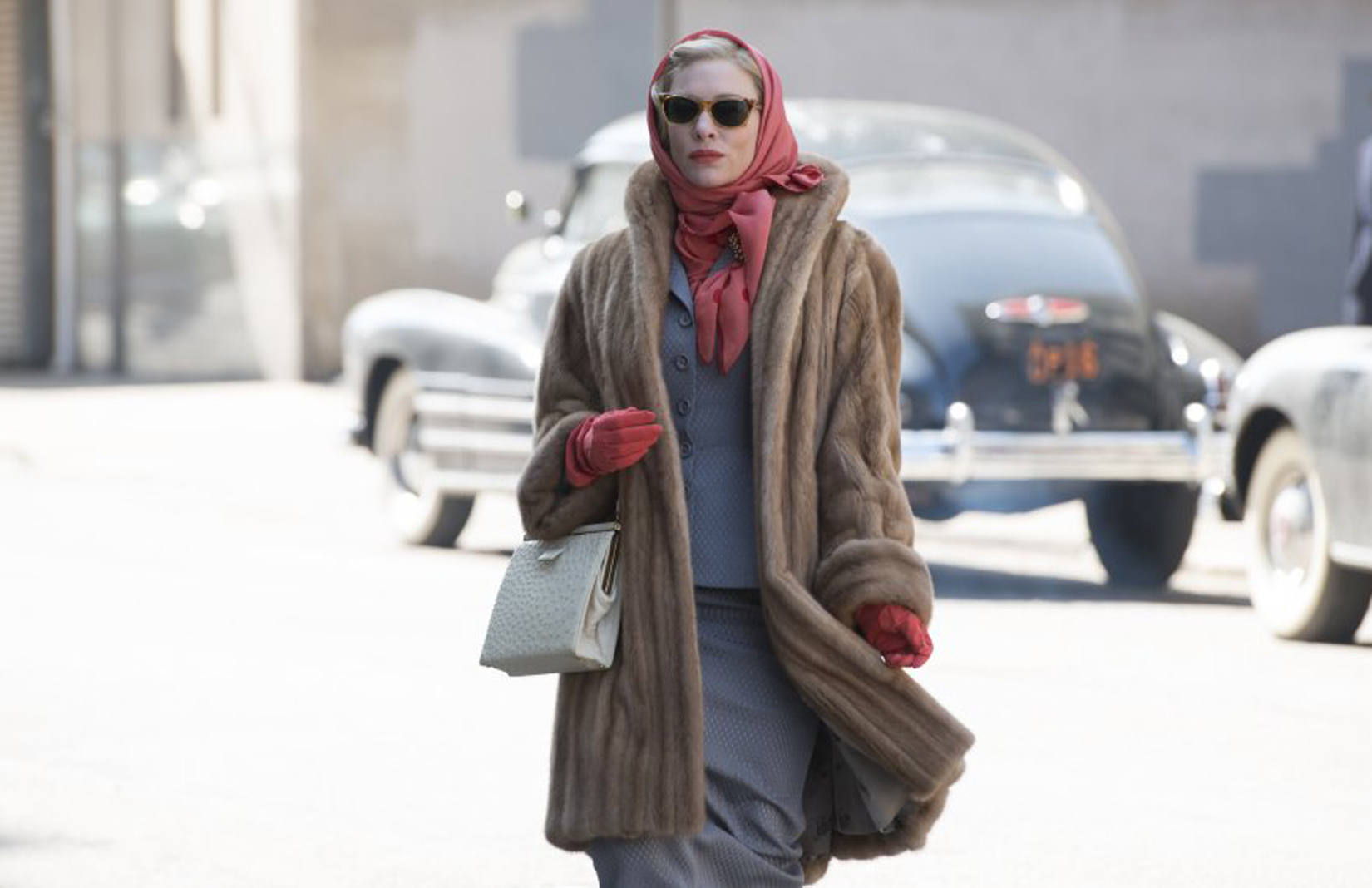Part of the magic of movies lies in the illusion of location. While it’s still common practice for interior sets to be constructed within vast sound stages, green screen technology has largely negated the need for elaborate studio backlots – permanent exteriors which can be dressed to resemble a specific period or place. A less-talked-about but equally well-established trick of the trade is the use of city stand-ins, when a preferred location is inaccessible or too expensive to shoot in.
Here are 10 films with famous settings that aren’t entirely what they seem….
Carol
Cincinnati moonlights as Manhattan
Based on Patricia Highsmith’s 1952 novel A Price of Salt, Todd Haynes’ masterful mid-century romance tells of a grand love affair between two women whose eyes meet across the shop floor of a Manhattan department store. But it’s not New York up there on the screen, it’s Cincinnati, chosen for its pristine 19th-century urban neighbourhoods. One such area, Over-the-Rhine, is said to contain the largest collection of Italianate architecture in the US, making it the ideal spot for a 1950s New York makeover. Ohio’s Queen City has stood in for the Big Apple several times before (see 1991’s A Rage in Harlem and 1993’s Lost in Yonkers), but thanks to recently introduced tax incentives, film and television production is set to boom in the coming years.
The Godfather: Part II
Santo Domingo stands in for Havana

One of the most memorable scenes from Francis Ford Coppola’s 1974 film The Godfather: Part II sees mafia don Michael Corleone (Al Pacino) flee a chaotic Havana as the rebels, led by a young Fidel Castro, rise up to claim the city. US-Cuba relations weren’t exactly peachy in the mid-70s, so Havana was substituted for Santo Domingo in the Dominican Republic. Fortunately, Paramount Pictures’ parent company, Gulf & Western, owned a considerable amount of property in and around the island’s capital (the El Embajador Hotel being the most prominent example in the film) where all of the pre-Revolution scenes were filmed.
Rumble in the Bronx
Vancouver body-doubles as the Bronx, New York
It’s become something of an industry in-joke that Vancouver never plays itself. After New York and Los Angeles, the Canadian seaport is the third biggest film production city in North America, having been disguised in some 300 productions over the last 30 years – playing everywhere from Washington state in 1982’s First Blood to North Korea in 2014’s The Interview. The reason is essentially twofold: tax breaks and architectural anonymity. Of course, not all films shot in Vancouver have been completely successful in deceiving audiences. The most infamous case in point is the 1995 Jackie Chan knockabout comedy Rumble in the Bronx, where you can actually glimpse the North Shore Mountains in the background of a couple of shots.
Brassed Off
Birmingham is swapped in for London
The most effective architectural doppelgängers are those that manage to replicate familiar landmarks. In the 1996 British comedy, Brassed Off, a colliery brass band from a northern village travel down to London to play in a national competition at the Royal Albert Hall. Only, the stage on which Pete Postlethwaite delivers his inspirational speech at the end of the film actually belongs to the Symphony Hall in Birmingham. Designed by Percy Thomas Partnership and Renton Howard Wood Levin, the concert venue was modelled on the Wiener Musikverein in Vienna and the Royal Concertgebouw in Amsterdam and was opened in 1991.
RoboCop
Dallas doppels for Detroit

Given that Detroit declared bankruptcy in 2013, it’s perhaps understandable that the city is not first choice for Hollywood location scouts. Yet as far back as 1987, Detroit was deemed unfit for the big screen, most notably being swapped out for Dallas in Paul Verhoeven’s dystopian actioner RoboCop. In fairness, the Texas metropolis’ futuristic architecture made it the perfect fit, with buildings like the geodesic dome-capped Reunion Tower and the Modernist, inverted pyramid-shaped Dallas City Hall featuring heavily throughout the film. Fun fact: the film’s 1990 sequel was filmed across the state in Houston.
Scarface
Los Angeles fills in for Miami
One benefit for a city offering its services to a major Hollywood production is the boost in tourism it’s likely to receive. In the case of Brian De Palma’s 1983 crime drama Scarface, however, the Miami Tourist board feared the film’s negative depiction of the city would have the reverse effect. Apparently more forthright about its reputation, Los Angeles filled in for many of the film’s exterior scenes. Despite being situated on opposite coasts, the cities share a temperate climate and Art Deco architecture, among other things.
Downfall
St Petersburg takes a turn as wartime Berlin
For Oliver Hirschbiegel’s 2004 historical drama, Downfall, cinematographer Rainer Klausmann was tasked with making the streets of St Petersburg look like 1940s Berlin. The German capital was heavily bombed during WWII and though some of the city’s finest examples of Baroque and classical architecture remain standing, a replacement location was required. With its variety of old buildings – many of which were designed by German architects – and absence of modern street advertising, St Petersburg made for a seamless stand-in.
Amadeus
Prague poses as Vienna

The story of Wolfgang Amadeus Mozart may have unfolded in Vienna but this Oscar-sweeping biopic from 1985 was shot almost exclusively in Prague. Only a handful of sets were built in the world renowned Barrandov Studios, allowing director Milos Forman to utilise some of the city’s most iconic buildings – from Kostel svatého Jiljí (St Giles’ Church) to Arcibiskupský palác (Archbishop’s Palace) to aristocratic residences such as Hradčanské náměstí and Maltézské náměstí. Forman was even granted permission to shoot in the Anton Haffenecker-designed Estates Theatre, where the composer premiered two of his most celebrated operas, Don Giovanni and La clemenza di Tito, two centuries earlier.
World War Z
Glasgow plays a post-apocalyptic Philadelphia
It’s not always essential for a city to bear a striking resemblance to its on screen double. Sometimes resourcefulness and some neat camerawork is enough to make the illusion stick. Take Glasgow’s George Square, which played host to a zombie outbreak in the Brad Pitt blockbuster World War Z. Philadelphia, where the film is set, was initially in line for the shoot but lost out due to insufficient tax credits, giving Scotland’s largest city the chance to show off its historic Georgian civic square.
Chicago
Toronto wings it as The Windy City

Don’t be fooled by the title: Rob Marshall’s 2002 musical Chicago was actually filmed in Toronto. Along with Vancouver, the Canadian city has become known colloquially as ‘North Hollywood’, and attracts dozens of film and television productions each year. Interiors for the Chicago theatre where Roxie (Renée Zellweger) watches Velma (Catherine Zeta-Jones) perform ‘All That Jazz’ were shot at the Elgin Theatre, designed by Thomas W. Lamb, which dates back to 1913 and forms the world’s oldest Edwardian stacked theatres alongside the Winter Gardens. Elsewhere in the film, the late Georgian Palladian-styled Osgoode Hall doubles as the courthouse.
Read next: Wes Anderson directs H&M’s pastel-tinged Christmas advert























